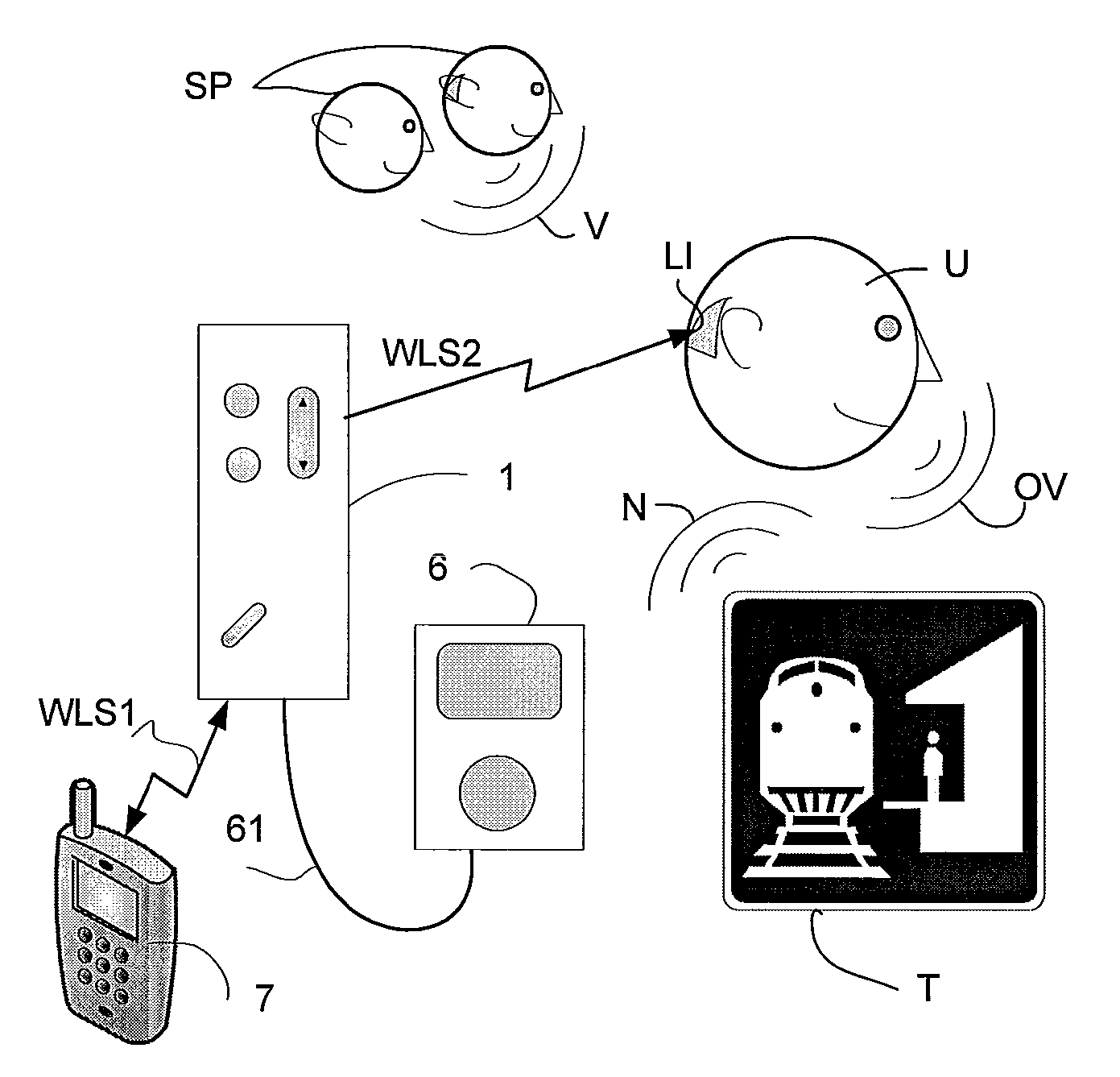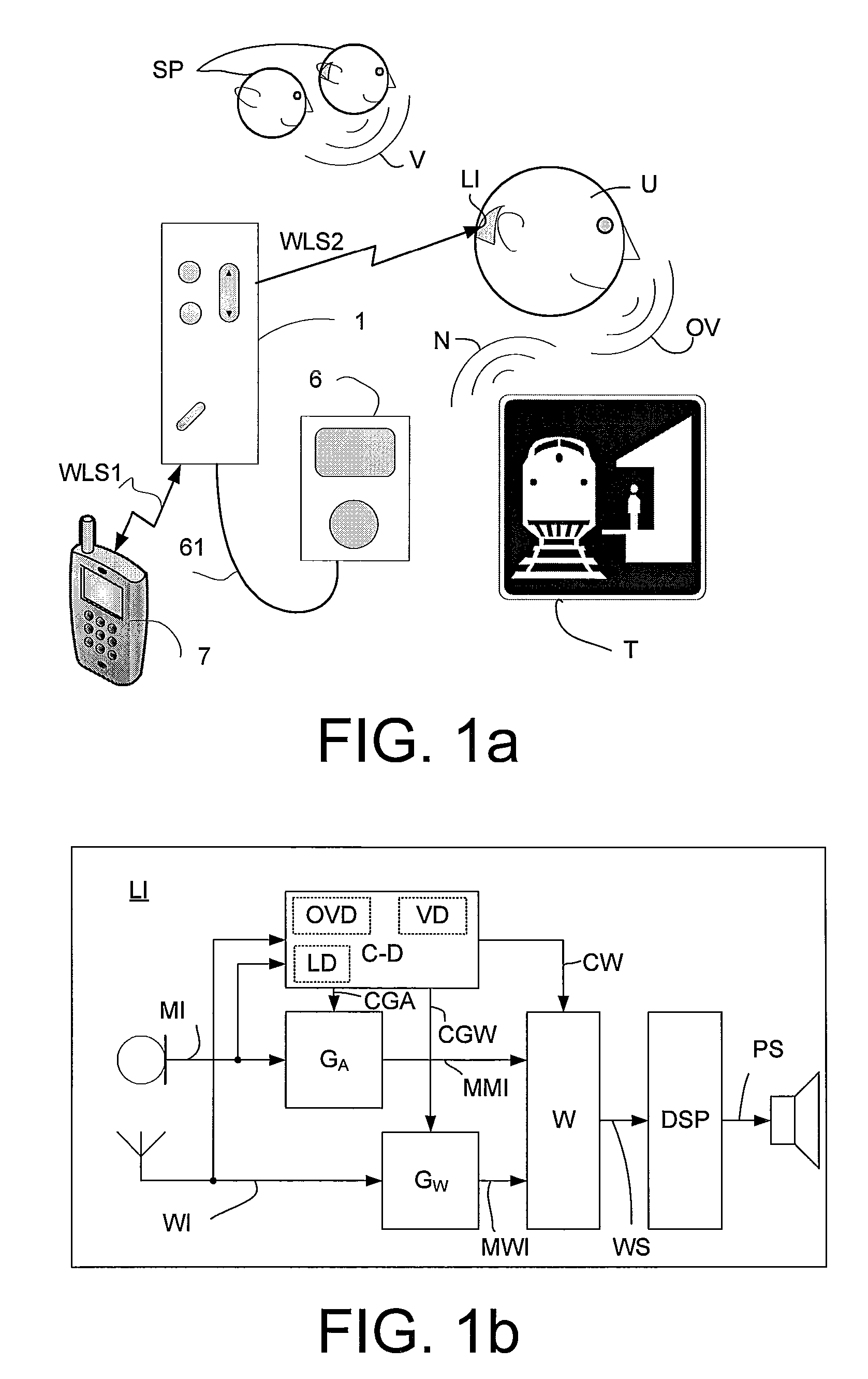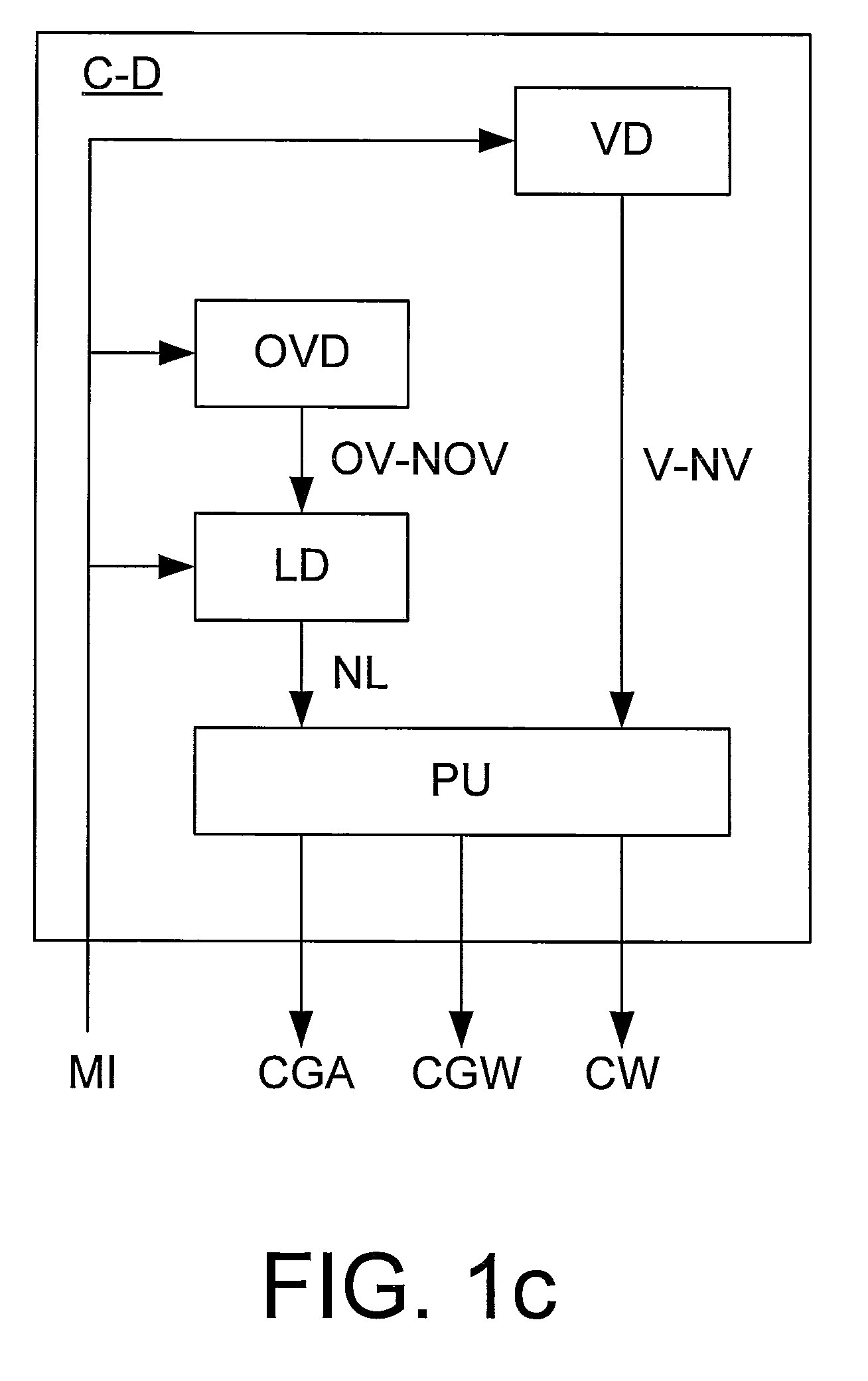Method for dynamic suppression of surrounding acoustic noise when listening to electrical inputs
a technology of electrical input and surrounding acoustic noise, applied in the field of dynamic suppression of surrounding acoustic noise when listening to electrical input, can solve the problems of user still having problems, interference with the perceived audio quality and speech interpretation, and the signal to noise ratio (s/n) of the combined signal may be too low to allow him/her to understand the electrical input signal, etc., to achieve the effect of improving listening comfor
- Summary
- Abstract
- Description
- Claims
- Application Information
AI Technical Summary
Benefits of technology
Problems solved by technology
Method used
Image
Examples
Embodiment Construction
FIG. 1a shows a listening scenario comprising a specific acoustic environment for a user wearing a listening instrument. FIG. 1a shows a user U wearing a listening instrument LI adapted for being worn by the user. A listening instrument is typically adapted to be worn at or in an ear of a user. In an embodiment, the listening instrument comprises a hearing instrument being adapted or fitted to a particular user (e.g. to compensate for a hearing impairment). The listening instrument LI is adapted to receive an audio signal from an audio gateway 1 as a direct electric input (WI in FIG. 1b), here a wireless input received via a wireless link WLS2. The audio gateway 1 is adapted for receiving a number of audio signals from a number of audio sources, here cellular phone 7 via wireless link WLS1, and audio entertainment device (e.g. music player) 6 via wired connection 61 and for transmitting a selected one of the audio signals to the listening instrument LI via wireless link WLS2. The li...
PUM
 Login to View More
Login to View More Abstract
Description
Claims
Application Information
 Login to View More
Login to View More - R&D
- Intellectual Property
- Life Sciences
- Materials
- Tech Scout
- Unparalleled Data Quality
- Higher Quality Content
- 60% Fewer Hallucinations
Browse by: Latest US Patents, China's latest patents, Technical Efficacy Thesaurus, Application Domain, Technology Topic, Popular Technical Reports.
© 2025 PatSnap. All rights reserved.Legal|Privacy policy|Modern Slavery Act Transparency Statement|Sitemap|About US| Contact US: help@patsnap.com



